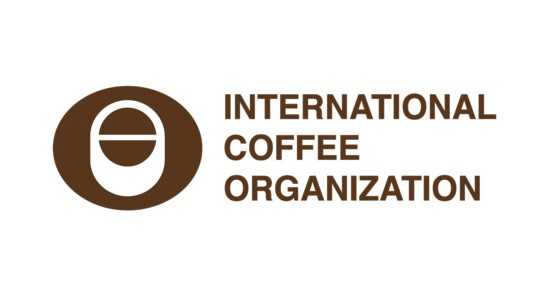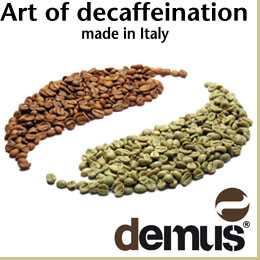LONDON, UK – Coffee prices reached new historic lows in April, according to the Ico monthly report. In April 2019, the ICO composite indicator fell by 3.2% to 94.42 US cents/lb, which is the lowest monthly average since July 2006 when the price reached 88.57 US cents/lb. Prices for all group indicators fell in April 2019.
Low prices discouraged sales in March 2019, and world coffee exports amounted to 10.98 million bags, 3.8% lower than in March 2018. Shipments in the first half of coffee year 2018/19 increased by 4.1% to 63.15 million bags, reflecting the ample supply of coffee on the international market.
Shipments of Brazilian Naturals rose by 18.4% to 21.7 million bags, and Colombian Milds grew by 8.6% to 7.95 million bags.
Exports from Brazil in the first half of coffee year 2018/19, fuelled by significant growth in its harvest and encouraged by a depreciation in the exchange rate, increased by 26.5% to 21.29 million bags, driving the growth in global exports.
Between April 2018 and March 2019, world exports rose by 4% to 124.72 million bags. The exports in this period coincide with the crop year for a number of countries, including Brazil and Indonesia, the world’s largest and fourth largest producers.
Coffee prices continued their downward trend as the monthly average of the ICO composite indicator fell to 94.42 US cents/lb in April 2019, 3.2% lower than in March 2019 and 16.1% lower than in April 2018.
This represents the lowest monthly average composite indicator since July 2006 when it reached 88.57 US cents/lb. In April 2019, the daily composite indicator moved within a range of 91.79 US cents/lb and 97.25 US cents/lb.
The fall to 91.79 US cents/lb on 17 April was the lowest daily price since 1 August 2006 when it was 88.77 US cents/lb.
Market fundamentals are one of the main drivers of the current low prices as coffee year 2018/19 production exceeds consumption by 3.69 million bags. This is the second consecutive season of surplus with a cumulative total of 8.35 million bags.
Prices for all group indicators fell in April 2019, reaching monthly lows last seen 12 to 14 years ago. Colombian Milds observed the smallest month-on-month decline as it fell 0.6% to 124.42 US cents/lb. This is the lowest price for Colombian Milds since July 2007 when it amounted to 120.78 US cents/lb.
Other Milds declined by 2.2% to 121.13 US cents/lb, and this level was last observed in December 2008 when it reached 118.97 US cents/lb. As a result of the movements, the differential between Colombian Milds over Other Milds increased by 145.5% to 3.29 US cents/lb, continuing the upward trend that started in March 2019.
The price for Brazilian Naturals declined by 3.5% to 92.47 US cents/lb, and Robustas fell by 4.8% to 73.28 US cents/lb. Prices for Brazilian Naturals are at their lowest level since September 2005 when they amounted to 89.48 US cents/lb. However, the Robusta indicator price experienced a more recent low in May 2010 when it reached 70.70 US cents/lb.
In April, the arbitrage between Arabica and Robusta coffees, as measured on the New York and London futures markets rose by 0.1% to 30.25 US cents/lb, following two months of decline. Intra-day volatility of the ICO composite indicator price increased by 0.5 percentage points to 6.2% as the intra-day volatility of Robusta and Brazilian Naturals increased by 1.5 and 0.2 percentage points, respectively. This offset the decline of 0.3 percentage points in the intra-day volatility of Colombian Milds.
In March 2019, world coffee exports amounted to 10.98 million bags, 3.8% lower than in March 2018 as low prices that month discouraged sales. Decreased shipments of Other Milds and Robusta offset growth in Colombian Milds and Brazilian Naturals. Compared to March 2018, exports of Brazilian Naturals increased by 9.7% to 3.11 million bags, and exports of Colombian Milds rose by 14% to 1.32 million bags in March 2019. In contrast, shipments of Robusta fell by 12.1% to 4.19 million bags, and exports of Other Milds decreased by 11.4% to 2.36 million bags.
Global exports in the first half of coffee year 2018/19 reached 63.15 million bags compared to 60.63 million bags in the first six months of 2017/18. For October 2018 to March 2019, shipments of Colombian Milds grew by 8.6% to 7.95 million bags as Colombia’s exports increased by 6.5% to 7.14 million bags during this period. Robusta exports in coffee year 2018/19 fell by 0.9% to 22.07 million bags, while shipments of Other Milds decreased by 10.2% to 11.43 million bags.
Exports from the top three exporters of green Robusta fell in the first half of coffee year 2018/19. Shipments of green Robusta from Vietnam decreased by 5.9% to 11.89 million bags, from Uganda by 4.4% to 1.64 million bags and from India by 8.5% to 1.52 million bags.
Other Milds exports observed a similar trend as shipments from Honduras, the largest exporter in the group, fell by 15.9% to 2.81 million bags. Exports from Peru and Guatemala, the next two largest shippers of this type, decreased by 1.4% to 2.1 million bags and by 9.4% to 1.1 million bags, respectively. For October 2018 to March 2019, exports of Brazilian Naturals rose by 18.4% to 21.7 million bags, as Brazil’s shipments of green Arabica increased by 22.8% to 18.19 million bags.
For the twelve months to March 2019, Brazilian Naturals, which increased by 12.5% to 38.11 million bags, also drove the growth in global exports for the period. In the same period, Colombian Milds rose by 5.5% to 14.6 million bags and Robusta increased by 2.8% to 45.21 million bags. However, Other Milds fell by 4.9% to 26.8 million bags.
The exports in this period coincide with the crop year for a number of countries, including Brazil and Indonesia, the world’s largest and fourth largest producers.
Peru, Papua New Guinea and Ecuador are also relevant producers with an April to March crop year. Harvesting of these producers’ 2019/20 crop is already underway with expectations of a fairly large off-year crop in Brazil given the generally favourable weather during the growing season.
This is expected to keep the market well-supplied, reducing the possibility of a significant rally later in the year.
Between April 2018 to March 2019, Brazil’s total shipments amounted to 37.13 million bags, 20.6% higher than one year ago. This is also the third highest volume on record for shipments between April and March and represents around 60% of its production in crop year 2018/19. Brazil recorded a new record harvest in crop year March 2018 to April 2019 of 62.5 million bags, 18.5% higher than in 2017/18 and 10.1% higher than in 2016/17, the last on-year crop.
The abundant harvest has supplied the market well in the last twelve months, as reflected in Brazil’s increased shipments. The increased volume of exports from Brazil has been encouraged by the depreciation of the Brazilian Real against the US dollar. As can be seen in figure 5, the Real weakened considerably between March 2018 and April 2019.
This depreciation increases the return in local currency for Brazilian exporters selling coffee priced in dollars, thereby creating an incentive to release their stocks to the international market.
Between April 2014 to February 2016, the Brazilian Real also weakened greatly, its value falling by 43.7% against the US dollar, while Brazil’s exports in crop years 2014/15 and 2015/16 were the two highest volumes on record
While shipments from Indonesia rose by 37.3% to 475,318 million bags in March 2019 compared to March 2018, its shipments for April 2018 to March 2019 fell by 33.7% to 5.15 million bags. This is the lowest volume of shipments since April 2011 to March 2012.
However, supplies were tight at the start of crop year 2018/19 due to the 6.4% decline in production in crop year 2017/18 to 10.8 million bags while exports rose by 12.6% to 7.76 million bags.
The limited supplies, coupled with rising domestic demand, currently estimated 2.1% higher than last year at 4.8 million bags, have contributed to the decline in exports in the last 12 months
Peru’s shipments fell by 2.7% to 3.92 million bags for the 12 months ending March 2019. The largest declines during this period occurred in the first two months of 2019. February 2019 shipments were 28.3% lower than shipments in February 2018.
This trend continued in March 2019, where exports amounted to 54,015 bags, 28% lower than in March 2018, despite an increase in production of 2.8% to 4.4 million bags. In the face of unusually low prices in recent months, farmers and exporters may be holding onto coffee, particularly as Peru is at the end of its 2018/19 crop year when supplies are at their lowest.
Exports from Ecuador for the 12 months to March 2019 are 30.7% lower than a year ago, reaching 446,000 bags. Its shipments for April to March have declined in each year since 2012/13 when exports reached 1.58 million bags.
Part of the decline is attributed to lower production, particularly after the coffee leaf rust outbreak in 2012/13. However, Ecuador’s coffee sector has also concentrated on value addition through growth of its specialty coffee market as well as rising shipments of soluble coffee.
While overall shipments from Ecuador declined steadily in the last six years, the share of its soluble shipments have increased from 71% in 2012/13 to 85% in 2018/19.
In contrast to Peru and Ecuador, exports from Papua New Guinea in April 2018 to March 2019 rose by 26.8% to 928, 369 bags. Papua New Guinea exports nearly all of its harvest, and primarily as green coffee, though it does ship small amounts of roasted coffee. The increased shipments in 2018/19 reflect the growth in its output, which is estimated at 950,000 bags, 29.4% higher than in crop year 2017/18.




















